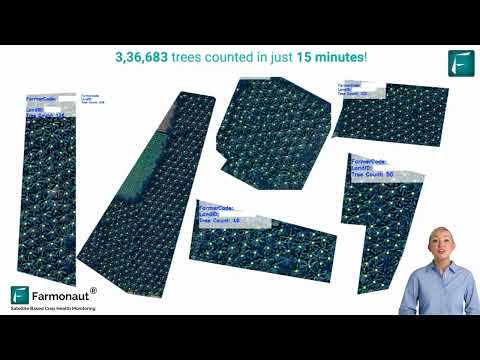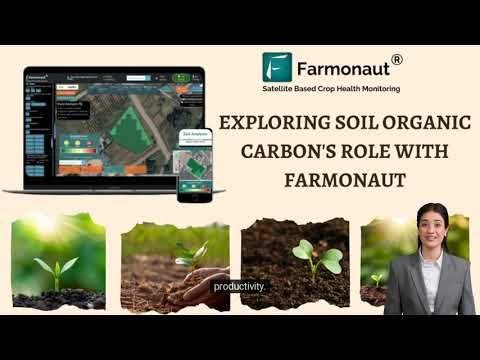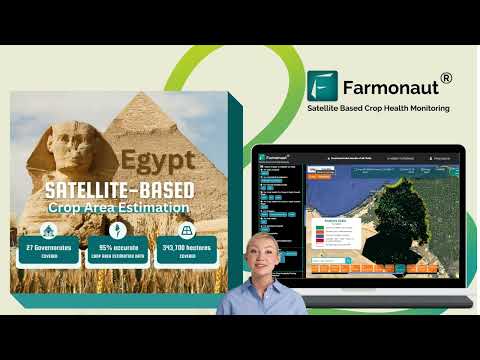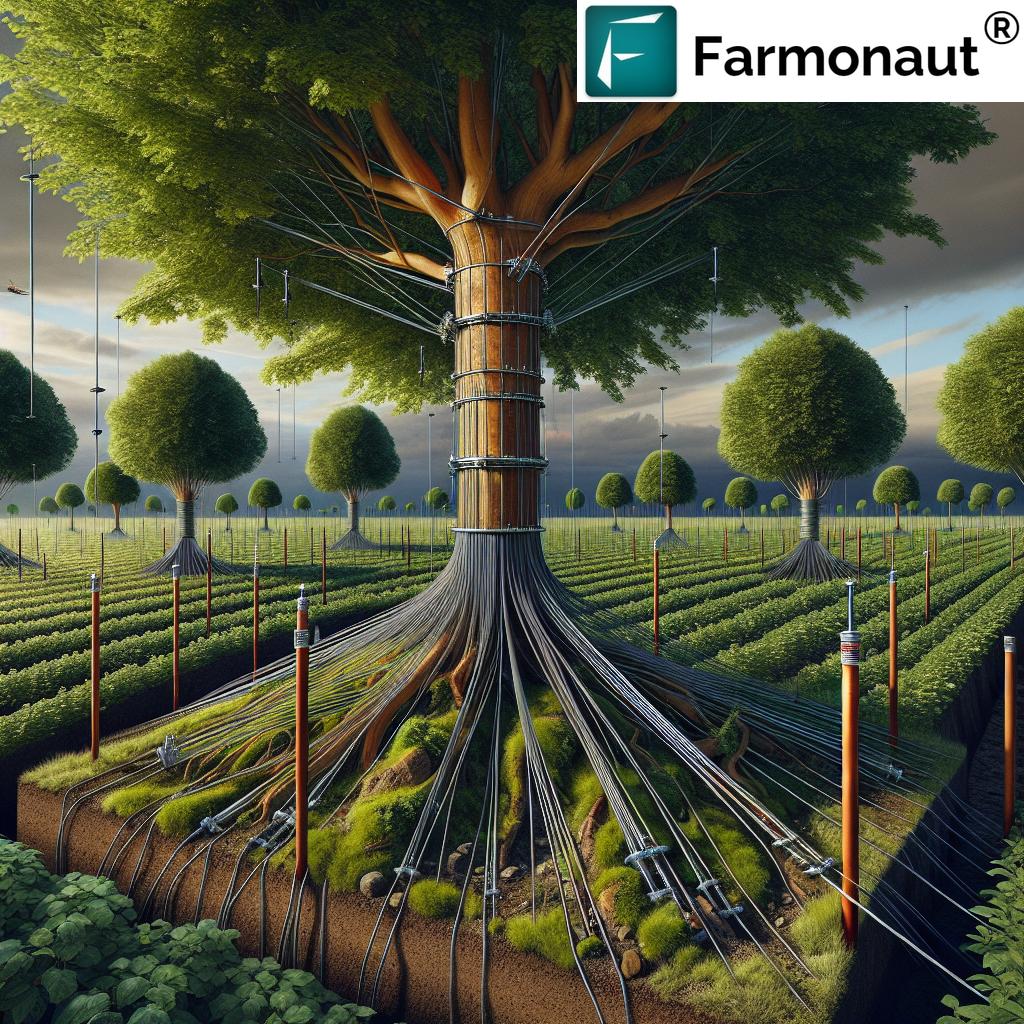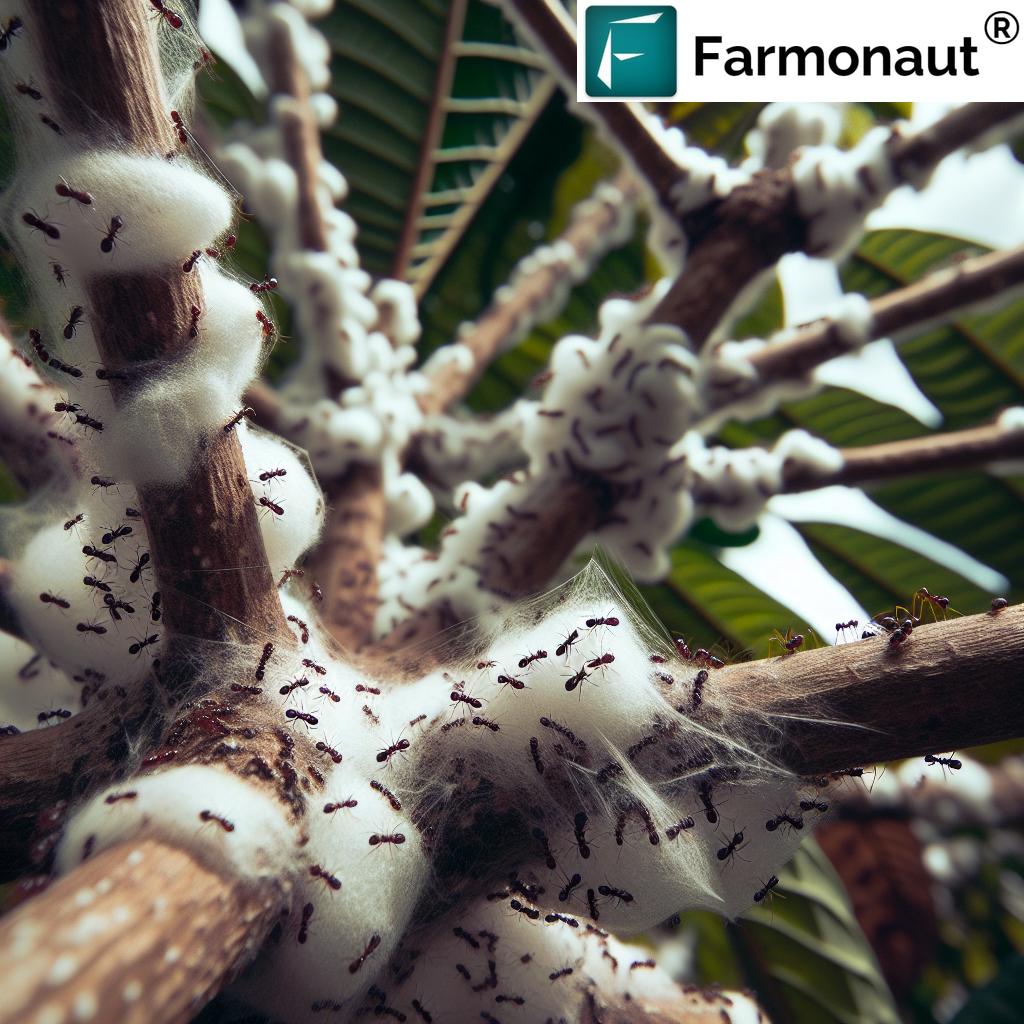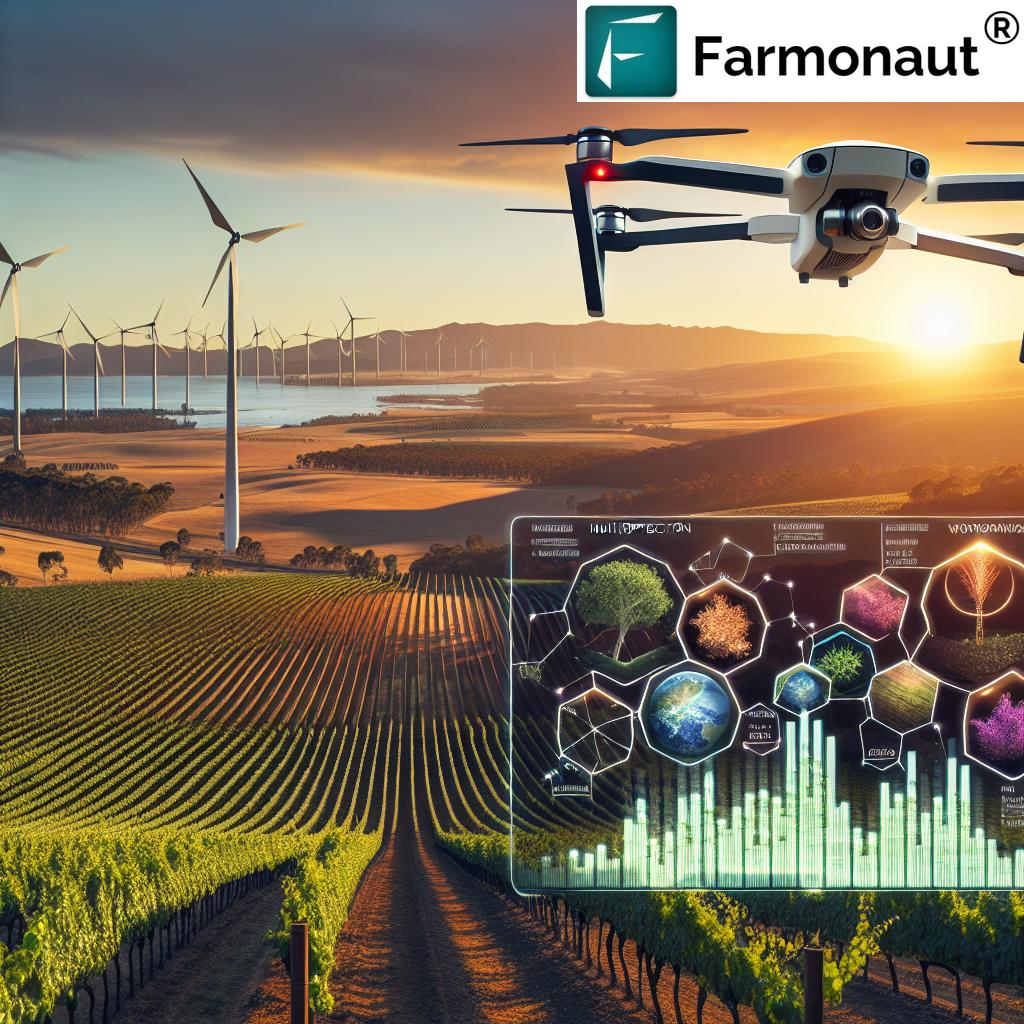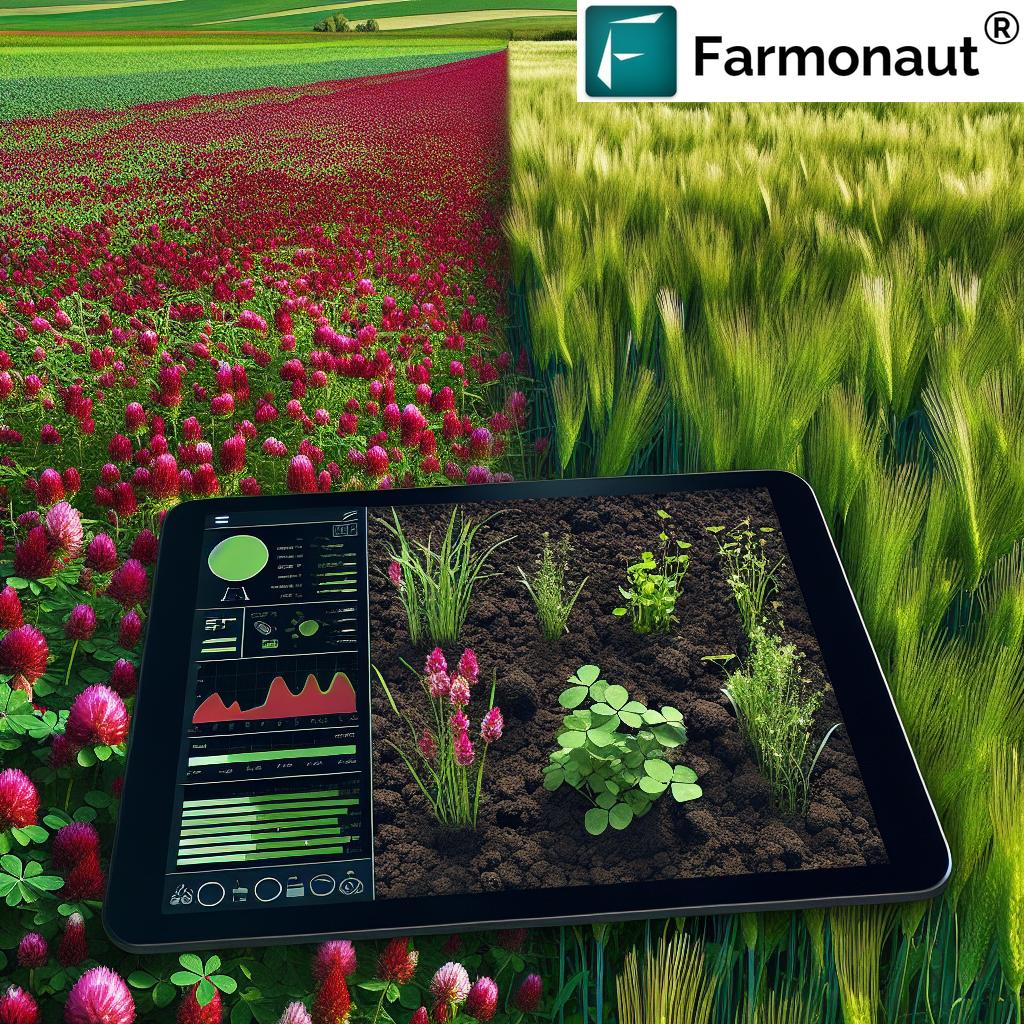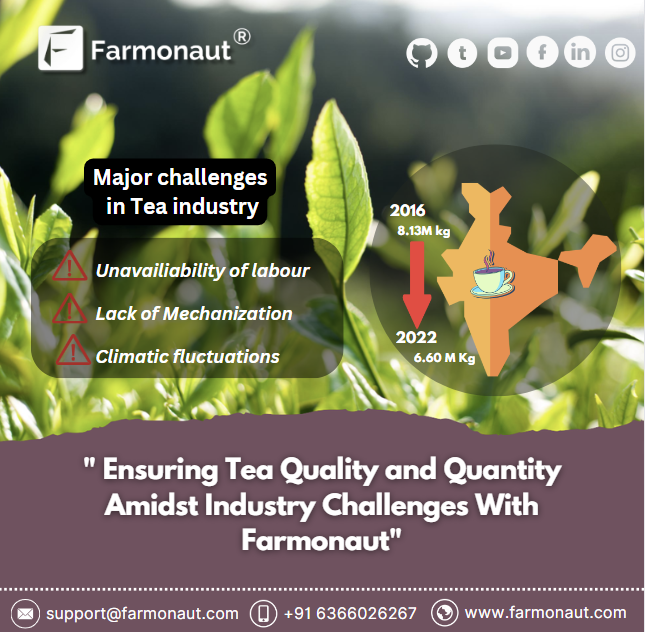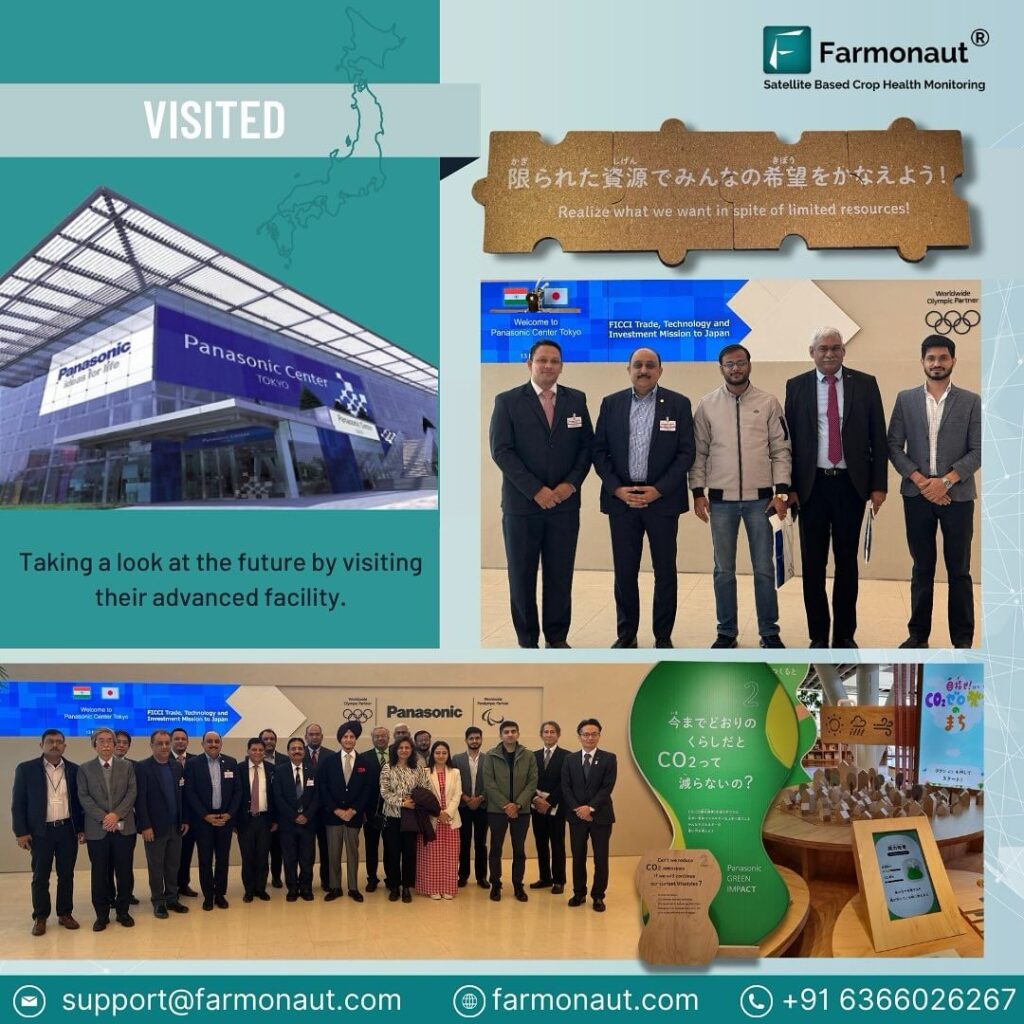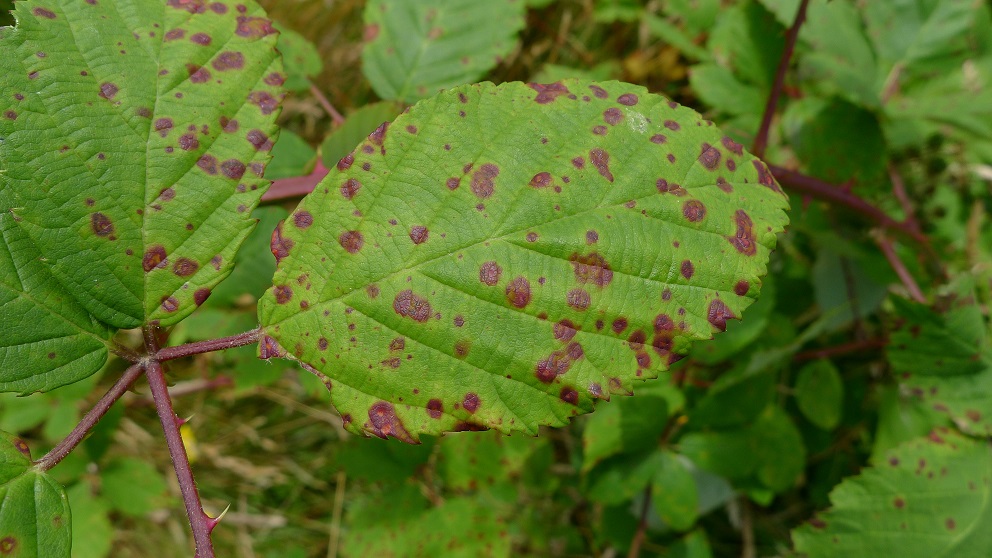Sustainable Forest Management Practices: 7 Shocking Secrets
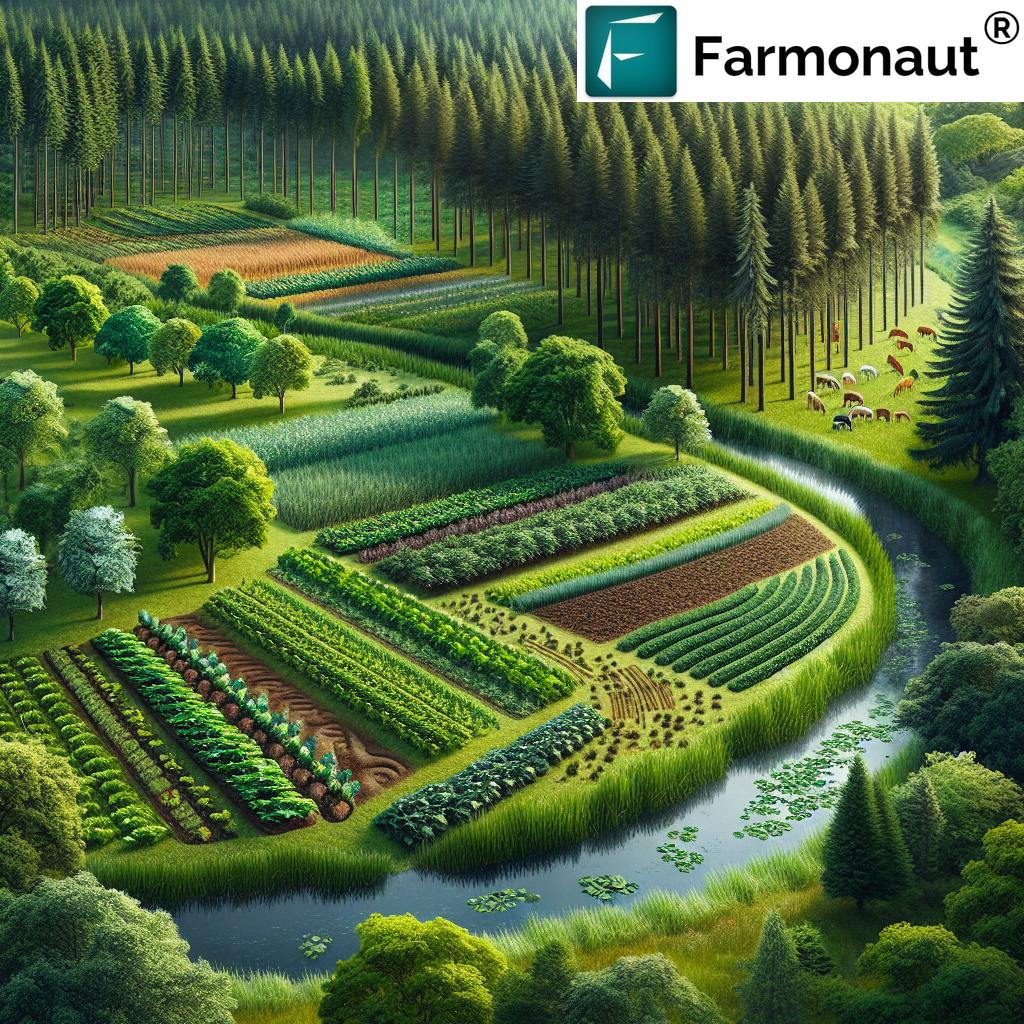
Sustainable forest management (SFM) stands at the core of our efforts to protect and nurture the world’s forests while fulfilling economic, social, and ecological needs of present and future generations. As environmental stewards, it is our responsibility to balance forest ecosystem health, economic growth, and the well-being of local communities through innovative and sustainable forestry practices. In this comprehensive guide, we unlock the 7 shocking secrets behind the world’s most impactful forest management practices, revealing how SFM boosts biodiversity, improves soil health, and uplifts livelihoods, particularly through agroforestry, integrated pest management (IPM), and community-based forest management (CBFM).
Harnessing the power of advanced tools—like Farmonaut’s satellite-based management solutions—further supports precision stewardship and resource optimization on a global scale. Together, we’re redefining the boundaries of sustainable forestry and climate change resilience.
Table of Contents
- What is Sustainable Forest Management?
- Key Principles of SFM
- Secret 1: Agroforestry—Nature’s Biodiversity Boost
- Secret 2: CBFM—Empowering Communities for Forest Resilience
- Secret 3: Mycoforestry—Power of Fungi in SFM
- Secret 4: Integrated Pest Management (IPM) in Sustainable Forestry
- Secret 5: Silviculture—Scientific Stewardship of Forests
- Secret 6: Forest Certification—Trust and Market Advantage
- Secret 7: Carbon Footprinting for Climate Change Mitigation
- Comparative Table: Key Sustainable Forest Management Practices
- The Transformative Benefits of Sustainable Forest Management
- Challenges and Considerations in SFM
- How Farmonaut Technology Powers SFM
- Frequently Asked Questions (FAQ)
- Conclusion
What is Sustainable Forest Management?
Sustainable forest management (SFM) is a holistic approach centered on achieving harmony among environmental health, economic viability, and social equity in forested landscapes. Instead of exploiting trees and natural resources for immediate gain, SFM fosters stewardship—ensuring our forest ecosystems remain productive, diverse, and resilient for generations.
Grounded in the principles of balance and stewardship, sustainable forest management:
- Protects biodiversity
- Preserves and enhances soil health
- Promotes the long-term viability of forest resources
- Prioritizes the livelihoods of local communities
- Supports climate change mitigation through forestry
SFM is not just a theory—it’s a collection of integrated, actionable forest management practices influencing everything from plantation design to harvest, forest restoration, and post-harvest regeneration.
Key Principles of Sustainable Forest Management
Every sustainable forestry practice is rooted in three foundational pillars:
-
Ecological Sustainability:
- Safeguards the health and resilience of entire forest ecosystems.
- Maintains habitats and supports biodiversity conservation in forests for both flora and fauna.
- Upholds natural cycles—water, nutrients, and carbon sequestration.
-
Economic Viability:
- Enables responsible, productive use of timber and non-timber forest resources.
- Balances economic growth with the regeneration of trees and natural assets.
- Promotes opportunities for local communities—from agroforestry jobs to eco-tourism, thereby boosting rural incomes.
-
Social Equity:
- Empowers communities through participatory management.
- Ensures social benefits—education, traditional culture, and equitable resource sharing.
- Elevates the voices of indigenous people and respects customary forest rights.
Secret 1: Agroforestry—Nature’s Biodiversity Boost
One of the most transformative forest management practices is agroforestry, a sustainable system that merges trees with crops and/or livestock on the same landscape. This integrated approach not only restores forest cover but also increases resilience, food production, and ecological services.
- Agroforestry systems mimic natural forests, resulting in more biodiversity and soil fertility than monocultures.
- Practices such as alley cropping, riparian buffers, silvopasture, windbreaks, and forest farming provide shade, prevent soil erosion, and create habitats for beneficial species.
- The combination encourages carbon storage, crucial for climate change mitigation through forestry.
How Agroforestry Practices Drive Forest Ecosystem Health:
- Alley Cropping: Planting crops between rows of trees stabilizes soil and maximizes land productivity.
- Silvopasture: Blends trees, livestock grazing, and forage. Provides shade and shelter for animals, enhances soil health, and boosts carbon sequestration.
- Riparian Buffers: Tree bands alongside water bodies filter runoff, prevent soil erosion, and enrich aquatic biodiversity.
- Windbreaks: Strategic rows of trees protect against wind erosion and create microclimates, reducing crop stress.
The true magic of agroforestry lies in how these systems mimic natural structures, supporting mycorrhizal fungi networks that improve water and nutrient uptake for crops and forest trees.
- Agroforestry systems can increase forest biodiversity by up to 50% compared to conventional forestry.
- Soil health improves thanks to continuous organic matter input and protection from extreme weather.
Farmonaut’s real-time satellite-based crop and vegetation health monitoring can help us optimize agroforestry land, detecting problem spots before they impact overall productivity.

Key Takeaways for Biodiversity Conservation in Forests
- Agroforestry increases ecosystem diversity, controls pests naturally, and delivers resilient food and wood supplies.
- It’s a cornerstone of sustainable forest management in both tropical and temperate zones.
Secret 2: CBFM—Empowering Communities for Forest Resilience
Community-based forest management (CBFM) is a paradigm-shifting model where local communities become the stewards of their forests. By decentralizing management, CBFM delivers not only ecological gains but also tangible economic and social improvements.
- CBFM projects in the Philippines and Nepal have shown how forest regeneration and community livelihoods rise when local people manage and benefit directly from forest resources.
- Local involvement prevents environmental degradation, restores forest cover, and halts unsustainable exploitation.
Why Community Engagement Is Essential for SFM Success
- Participation: Local ownership ensures monitoring, sustainable harvesting, and compliance with rules.
- Incentive: When rural communities gain legal rights to forest products, they’re motivated to protect forest ecosystems and invest in long-term management.
- Livelihoods: Diversified income streams—such as ecotourism, NTFPs (non-timber forest products), and agroforestry—reduce economic pressure for destructive land-use change.
CBFM showcases how sustainable forest management is a social as much as an ecological cause. With proper policies, training, and resource access, local communities can regenerate forests, preserve biodiversity, and benefit from them directly.
- In Nepal, CBFM halted hillslope degradation and regenerated barren areas.
- In the Philippines, it increased forest cover and improved community livelihoods.
Our CBFM Mission
By empowering local decision-making and ownership, CBFM transforms forest governance. It’s a sustainable forestry practice that we must champion for both ecosystem health and rural prosperity.
Secret 3: Mycoforestry—Power of Fungi in SFM
Among the lesser-known yet potent secrets, mycoforestry harnesses the biological strength of fungi—especially mycorrhizal and saprotrophic species—for forest renewal and management.
- Mycoforestry integrates mushroom cultivation and fungi biodiversity into forestry, improving nutrient cycling, soil health, and carbon sequestration.
- By inoculating soils and decaying wood with beneficial fungi, forest managers can accelerate decomposition and organic matter production.
- These fungi networks expand root systems, enabling better water and nutrient uptake for trees and crops.
The integration of fungi not only enhances ecosystem productivity but also generates new income streams from edible and medicinal mushroom harvesting—empowering community livelihoods and sustainable economic growth.
Why Mycoforestry Is a Secret Weapon in Forest Management
- Accelerates soil regeneration and forest succession after disturbance.
- Enhances carbon storage by fostering below-ground biomass.
- Boosts ecosystem health while offering alternative rural employment.
Enhancing Soil Health and Biodiversity Conservation in Forests
Mycoforestry represents the intersection of modern science and ancient wisdom—fostering resilient, naturally balanced forest ecosystems through the strategic cultivation of fungal partners.
Secret 4: Integrated Pest Management (IPM) in Sustainable Forestry
Integrated pest management (IPM) in forestry blends biological, cultural, and chemical control methods for efficient, sustainable pest regulation. Unlike conventional spraying, IPM targets pests smartly—maintaining ecosystem health and reducing collateral harm.
- Deploys natural predators and parasitoids to reduce pest pressure naturally.
- Monitors pests and diseases via field scouting (and satellite-guided remote sensing with platforms like Farmonaut).
- Pesticides are used as a last resort, only when thresholds are exceeded—protecting beneficial species and overall biodiversity.
Key Methods in Integrated Pest Management in Forestry
- Biological: Releasing or promoting native predators, e.g., ladybugs or parasitoid wasps.
- Cultural: Silvicultural practices (e.g., thinning) that disrupt pest lifecycles.
- Chemical: Use of specific, low-toxicity chemicals only as needed.
Regular monitoring is IPM’s secret sauce. Digital tools—like Farmonaut’s AI-based crop health monitoring—provide early warning and actionable data; empowering us to intervene surgically.
- IPM reduces dependency on pesticides, cuts costs, and supports critical biodiversity conservation in forests.
For more on digital tools for pest prediction and control, visit
our Crop, Plantation and Forest Advisory Service
.
Secret 5: Silviculture—Scientific Stewardship of Forests
The bedrock of sustainable forestry practices, silviculture is about applying science and craft to the development, management, and renewal of forests. Through silvicultural techniques, we nurture forest health, productivity, and resilience while delivering ecological and economic returns.
- Selective logging: Harvesting only mature or undesirable trees while maintaining canopy and undergrowth diversity.
- Thinning: Reducing density to minimize competition, improve light penetration, and support vigorous growth.
- Controlled burns: Used to recycle nutrients, eliminate pests, and stimulate regeneration in fire-adapted ecosystems.
By working with nature—not against it—silviculture enables us to manage forests sustainability while avoiding clear-cutting and minimizing soil erosion.
Silviculture in Practice
- Tailors interventions to each forest type, climate, and management objective.
- Maintains continuity of crucial ecological functions—such as habitat provision and water regulation.
- Improves the genetic quality and resilience of forest stands.
Secret 6: Forest Certification—Trust and Market Advantage
A game-changer for both forests and consumers, forest certification and stewardship are mechanisms that ensure sustainable forestry and open doors to ethical, premium markets.
- Programs like the Forest Stewardship Council (FSC) provide independent verification that forestry operations meet rigorous environmental, economic, and social standards.
- Certification signals that products—wood, pulp, NTFPs—are sourced responsibly, building trust with buyers and end-users.
Forest certification and stewardship
drive accountability and reward forest owners for sustainable practices while increasing forest-derived income.
- Enables market access, premium pricing, and supply chain traceability.
- Protects against illegal logging and degradation.
The Role of Digital Tools in Certification
- Farmonaut’s blockchain-based traceability and real-time monitoring simplify compliance and audit trails for certification processes.
Forest certification is more than a label; it’s a commitment to global sustainability—and a strong differentiator in the eco-conscious marketplace.
Secret 7: Carbon Footprinting for Climate Change Mitigation
Third-party verified carbon accounting is now a pillar of sustainable forest management, essential for climate change mitigation through forestry.
- Forests act as carbon sinks, sequestering CO2 from the atmosphere. The more healthy and resilient our forests, the greater their mitigation impact.
- Carbon footprint monitoring identifies GHG sources, tracks sequestration efficiency, and informs resource allocation for maximum impact.
Farmonaut’s
carbon footprinting tools
let us quantify, monitor, and reduce the emissions across farm, forest, and agroforestry landscapes—empowering us to comply with climate policies and create new value in voluntary carbon markets.
- Supports reforestation project planning and evaluation.
- Acts as a foundation for sustainability reports and investor confidence.
Comparative Table: Key Sustainable Forest Management Practices
| Practice Name | Description | Estimated Increase in Biodiversity (%) | Estimated Improvement in Soil Health (%) | Impact on Community Livelihoods | Implementation Difficulty |
|---|---|---|---|---|---|
| Agroforestry | Integration of trees, crops, and livestock for diverse land use; includes alley cropping, silvopasture, windbreaks, and forest buffers. | +30% to +50% | +35% | High | Medium |
| Community-Based Forest Management (CBFM) | Empowering local communities to manage forest resources sustainably, promoting regeneration and equitable benefit-sharing. | +25% | +20% | Very High | Medium |
| Integrated Pest Management (IPM) | Combining biological, cultural, and chemical methods for targeted, ecosystem-friendly pest control in forestry. | +15% | +25% | Moderate | Low |
The Transformative Benefits of Sustainable Forest Management
- Biodiversity Conservation in Forests: SFM preserves diverse plant and animal life, sustains ecosystem services, and reduces extinction risks.
- Soil Fertility & Erosion Control: Healthy forests, through deep-rooted trees and fungal networks, stabilize soil, reduce nutrient loss, and promote resilient agriculture.
- Climate Change Mitigation through Forestry: SFM expands carbon sequestration, cools climates locally, and enhances water cycles.
- Economic Opportunities: Encourages jobs in forestry, value-added timber, NTFP (non-timber forest product) supply chains, and ecotourism.
- Cultural and Social Well-Being: Provides spaces for recreation, tradition, and spiritual connection while sustaining community livelihoods.
Challenges and Considerations in Sustainable Forest Management
- Policy and Governance: The success of SFM depends on clear land tenure, consistent regulations, and participatory policies.
- Community Engagement: Active involvement of local people is essential to avoid conflicts and ensure sustainable resource use.
- Economic Pressures: Short-term profits from unsustainable logging can undermine SFM unless local alternatives are promoted.
- Climate Change Adaptation: SFM must evolve rapidly to address shifting rainfall, temperature extremes, and new pests or diseases.
How Farmonaut Technology Powers SFM
Precision, transparency, and rapid response are prerequisites for modern forest management practices. Farmonaut brings these within reach for forest managers, communities, and enterprises worldwide with a suite of satellite, AI, and blockchain-powered solutions.
- Crop Health & Forest Canopy Monitoring: Real-time multispectral satellite analysis provides insights into vegetation health (NDVI), soil moisture, crop stress, pest emergence, and more—enabling timely, targeted interventions.
- Jeevn AI Advisory: Personalized resourcing, weather prediction, and expert advice improve day-to-day farm and forest decision-making.
- Fleet Management: Satellite-linked fleet oversight for forestry machinery and logistical optimization.
- Blockchain-Based Traceability: Secure, auditable supply chains from forest floor to product, crucial for certification and ethical markets.
- Carbon Footprinting: Real-time carbon accounting to ensure climate change mitigation through forestry strategies deliver quantifiable benefit.
API Integration for Developers: Farmonaut’s powerful APIs and Developer Documentation allow seamless embedding of data and intelligence into forestry, agriculture, and research applications.
By leveraging Farmonaut, we collectively elevate the efficiency, scale, and transparency of sustainable forest management.
Frequently Asked Questions (FAQ) – Sustainable Forest Management Practices
- 1. What is sustainable forest management, and why is it important?
- Sustainable forest management (SFM) refers to a set of principles and practices that balance ecological, social, and economic objectives, ensuring forests remain healthy, diverse, and productive for generations to come. It is crucial for biodiversity, climate regulation, soil health, and supporting rural and community livelihoods.
- 2. What are the primary benefits of agroforestry systems?
- Agroforestry systems provide increased biodiversity, improved soil structure, carbon sequestration, diversified incomes, and enhance landscape resilience—making them a pillar of sustainable forest management.
- 3. How does community-based forest management (CBFM) work?
- CBFM empowers local communities to manage forest resources directly, sharing both responsibilities and benefits. This approach improves forest cover, curbs environmental degradation, and raises incomes and social equity, especially in countries like Nepal and the Philippines.
- 4. What is mycoforestry, and how does it support sustainable forestry?
- Mycoforestry integrates beneficial fungi into forestry management, improving soil health and nutrient cycling, accelerating regeneration, and providing economic opportunities through mushroom cultivation.
- 5. What is the role of integrated pest management (IPM) in SFM?
- Integrated pest management in forestry uses a combination of biological, cultural, and targeted chemical methods to control pests efficiently, maintaining ecological balance and protecting overall forest health.
- 6. How does Farmonaut support sustainable forestry practices?
- Farmonaut offers advanced satellite-based monitoring, AI-powered advisory, blockchain traceability, resource management, and carbon footprinting—all of which empower data-driven, sustainable forest and farm management worldwide.
- 7. What challenges face sustainable forest management today?
- Challenges include unclear land tenure, policy gaps, insufficient community engagement, immediate economic pressures, and climate change. Overcoming these requires integrated solutions, education, technology, and supportive governance.
- 8. What is forest certification, and why does it matter?
- Forest certification systems, like FSC, independently verify that forest products come from responsibly managed forests. They enable access to ethical markets, premium pricing, and robust consumer trust.
- 9. How can I access Farmonaut services for my forest or farm?
- Use the Farmonaut App (web, Android, iOS) for real-time monitoring or integrate data via API. Farmonaut’s platform covers crop, plantation, and forest advisory, carbon footprinting, and resource management.
Conclusion: Our Roadmap to Forest Stewardship, Resilience, and Sustainability
Sustainable forest management is not merely a set of technical guidelines; it is our shared vision and responsibility to ensure that forests remain abundant, vibrant, and central to our climate, culture, and economy. The seven shocking secrets—from agroforestry and CBFM to mycoforestry, IPM, silviculture, certification, and carbon accounting—demonstrate that effective forest stewardship is achievable when we integrate ecological science, people-first decision-making, and technological innovation.
With platforms like Farmonaut, advanced monitoring, advisory, and traceability are accessible to all. We invite you to join us—whether as a land manager, policy shaper, community leader, or eco-conscious consumer—in championing the future of sustainable forestry. Let us empower communities, heal ecosystems, and build economic and climate resilience together.
Ready to transform your forestry or agricultural operations? Get started with Farmonaut’s precision-driven, sustainable solutions today.





